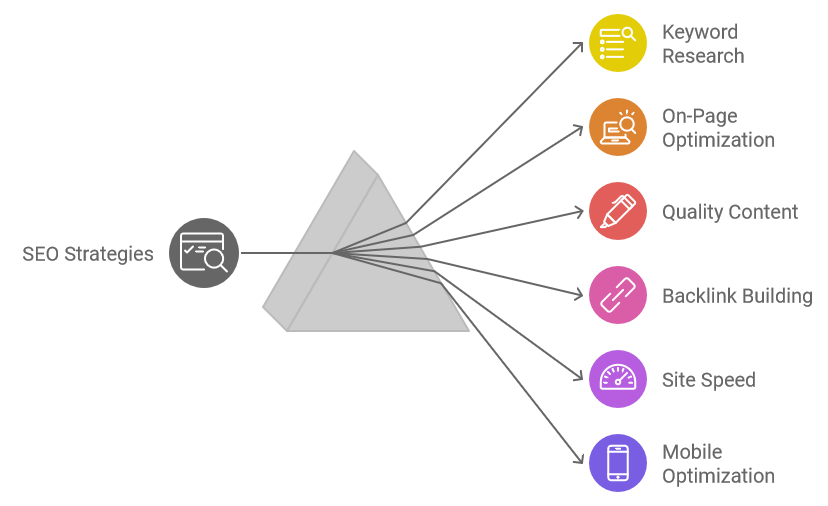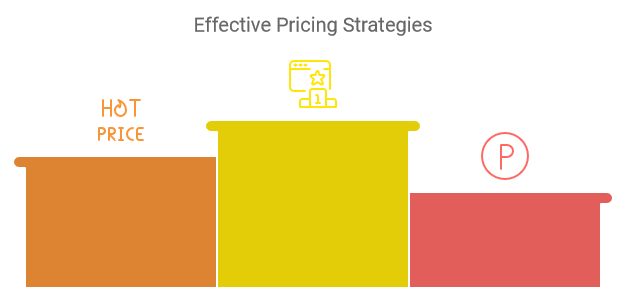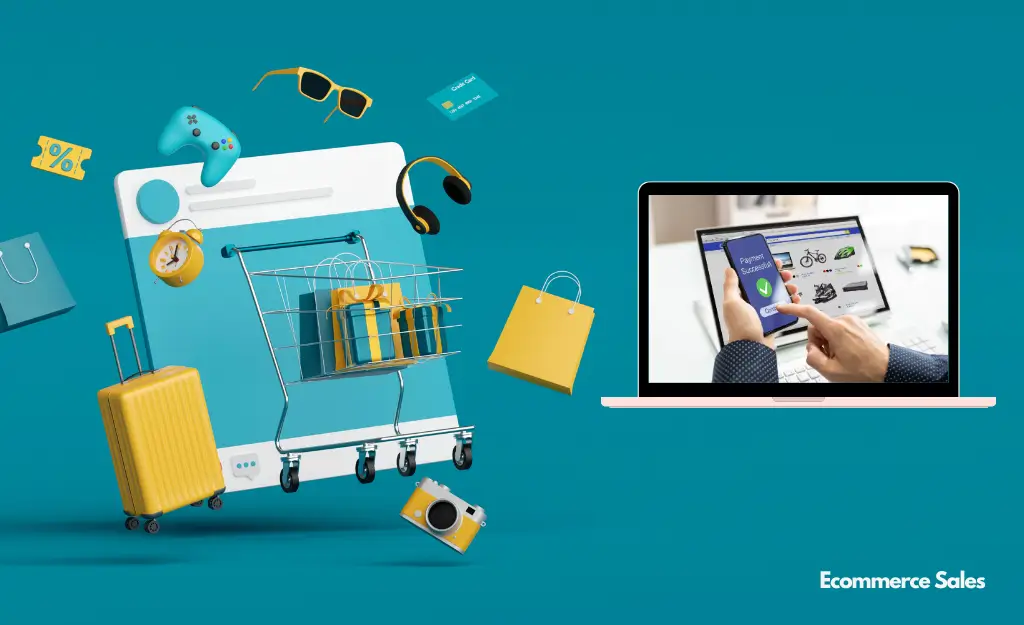Curious about when you’ll start seeing cash flow with ecommerce? Let’s break down the key revenue streams and why PPC campaigns can be a game-changer.
Ecommerce can be highly profitable when approached the right way. Here are the primary revenue streams:
- Product Sales (B2C): Like Amazon or Alibaba. Set up an online shop, sell your products, and earn money.
- Dropshipping: No need to keep inventory. Connect buyers with suppliers and take a cut (Virto Commerce).
- Subscription Services: Offer recurring products or services, ensuring consistent income.
- Affiliate Marketing: Promote other products on your site and earn commissions.
Each revenue stream affects your return on ad spend (ROAS) differently, but using a combination can lead to multiple income streams filling your account.
Why PPC Campaigns Matter
For fast results, PPC (Pay-Per-Click) campaigns are essential. Yieldify notes that PPC campaigns can contribute to 46% of your revenue and deliver a 200% ROI.
Let’s break down some stats:
- Revenue from PPC campaigns: 46%
- ROI of PPC campaigns: 200%
PPC includes Google Ads, social media ads, and more. It allows you to target specific groups and keywords to attract high-quality leads. Make sure your e-commerce platform is PPC-friendly for the best SEO and ad performance.
For beginners, PPC can fast-track profitability. With clear metrics and detailed analytics, you’ll know exactly where to adjust for better results.
Here’s how to improve your PPC efforts:
- Choose the right keywords: Focus on terms your customers are searching for.
- Optimize landing pages: Ensure they are built to convert.
- Smart budgeting: Allocate your funds carefully across different ads.
Combining multiple revenue streams with effective PPC campaigns can shorten the time it takes to start generating consistent income.
Want more tips on increasing revenue? Check out our detailed guides on PDP in ecommerce and whether Squarespace is right for your online store.
Boost Your Sales with Organic Traffic
Now let’s explore how organic traffic can significantly impact your bottom line and some key SEO strategies to get you there.
Organic traffic is a goldmine. According to Yieldify, eCommerce businesses generate 27% of their revenue from it, making it the second-largest revenue source after paid search. With 81% of online shoppers starting their search on Google, capturing this traffic is essential for long-term growth.
Take a look at how different traffic sources contribute to revenue:
| Source | Revenue Share |
|---|---|
| Paid Search | 30% |
| Organic Traffic | 27% |
| Email Marketing | 18% |
| Direct Traffic | 15% |
| Social Media | 10% |
Winning SEO Tactics
SEO is a long-term play. We suggest it takes around 12 months to see meaningful results, especially in competitive spaces. However, it’s worth the investment.

Here are some key strategies to help you succeed:
- Keyword Research: Identify the terms your customers are searching for. Tools like Google Keyword Planner or SEMrush can help you gather valuable data.
- On-Page Optimization: Optimize your product titles, descriptions, and headers with relevant keywords. This will improve visibility and attract more traffic.
- Quality Content: Produce valuable content such as blog posts and how-tos. High-quality content engages visitors and earns you better Google rankings. You can use a tool called My Cpy Hub.
- Backlink Building: Gain backlinks from reputable websites. Consider guest blogging or forming partnerships to build trust with search engines.
- Site Speed: A fast website enhances user experience and boosts your ranking. Use Google PageSpeed Insights to identify and fix any issues. You can hire us to speed up your Woocommerce site.
- Mobile Optimization: Ensure your site looks great and functions well on mobile devices. With Google’s mobile-first indexing, this is a must-have.
- User Experience (UX): A clean and user-friendly site reduces bounce rates and keeps organic traffic flowing.
Implementing these SEO strategies will help you drive more organic traffic and increase sales.
Email Marketing for Ecommerce
Email marketing isn’t just another option for e-commerce—it’s the multitool. With an ROI of 45:1, it’s one of the most effective ways to boost revenue.
For every dollar spent, you could see $45 come back. That’s why 89% of marketers rely on email marketing to generate leads and turn them into loyal customers (Central Bank).
Key Metrics:
- ROI: 45:1
- Marketers Using Email for Lead Generation: 89%
How to Build a Quality Email List
A strong email marketing strategy starts with a high-quality subscriber list. Here’s how to build that list with people who actually care about your products:
- Offer Value: Discounts, exclusive content, or freebies attract subscribers.
- Simple Sign-Up: Make it easy to subscribe by placing sign-up forms on your website, blog, and social media. You can use Lead Page tool to make higher CTR rating Sign Up page or landing page.
- Use Exit-Intent Pop-Ups: Grab attention before visitors leave your site.
- Run Contests and Giveaways: Collect emails through fun activities.
- Segment Your List: Target specific groups with relevant content to increase engagement and conversions.
With a quality list, you can send personalized, engaging emails that resonate with your audience. It’s not just about growing your list—it’s about meaningful interactions that lead to sales.
Getting Real with SMS Marketing
SMS marketing is a powerful way to engage customers and drive sales. This small but mighty channel can take your ecommerce game to the next level.
Ready to get started? Jump into SMS campaigns and watch how they can fuel your growth.

Why Bother with SMS Marketing?
SMS isn’t just for quick chats between friends—it’s a business powerhouse. 47% of marketers are already using it, and consumers love it too.
- Lightning Fast Reach: Texts are read almost instantly, so your message gets seen fast, driving immediate traffic and sales.
- High Engagement: SMS grabs more attention than email promotions, with quicker responses.
- Personal Connection: Send tailored offers and updates, building stronger customer relationships.
- Always Accessible: No internet needed. SMS works everywhere.
- Budget-Friendly: It’s cheaper than most marketing methods, giving you more value for your spend.
- Works with Other Channels: Combine SMS with email marketing or online campaigns for a powerful marketing mix.
Kickstart Your SMS Campaigns
Want to make SMS marketing work for you? Here’s how to start:
- Build a Solid List: Collect phone numbers with consent. Use sign-ups on your website, social media, or during checkout. Offer discounts or exclusive deals to encourage sign-ups.
- Know Your Audience: Segment your list by behavior, purchase history, or preferences for more effective messaging.
- Write Snappy Messages: Keep texts short and clear with strong CTAs. Personalize your messages to connect better.
- Plan Timing: Sync texts with product launches, sales, or holidays. Avoid overwhelming customers with too many messages.
- Track Metrics: Monitor open rates, click-throughs, and conversions. Adjust your strategy based on performance.
- Follow the Rules: Stick to regulations like the TCPA and always provide an opt-out option.
Key Metrics:
| Metrics | What They Mean |
|---|---|
| Open Rate | How many messages are opened |
| Click-Through Rate (CTR) | How many links in the messages are clicked |
| Conversion Rate | How many people take action (like buying) |
| Unsubscribe Rate | How many people opt out from messages |
Keep testing and refining your approach until you find what works best for your audience and business.
Secret Sauce for Ecommerce Success
After navigating the world of e-commerce, We’ve discovered two game-changing factors: smart pricing and high product quality.
Pricing Strategies That Work

We’ve tested various pricing strategies, each with its own benefits:
- Keystone Pricing: Double the wholesale price. Simple, but it can be too high in competitive markets.
- Discount Pricing: Cutting prices to attract bargain hunters.
- Psychological Pricing: Using prices like $19.99 instead of $20—it works because it feels cheaper.
- Competitive Pricing: Watching competitors and matching or beating their prices.
- Value-Based Pricing: Charging based on what customers think your product is worth. If they love it, you can charge more.
These strategies helped me find the perfect balance. If you’re after more pricing tips, explore our guide on PDP in ecommerce.
Keeping the Quality High
High-quality products keep customers coming back. Here’s how we maintain it:
- Reliable Suppliers: We only work with suppliers who maintain high standards. No cutting corners.
- Quality Control: Regular checks to catch issues before they reach customers.
- Customer Feedback: Listening to what customers say—they know best.
Quality products build trust, which leads to repeat customers and positive reviews. For more success secrets, check out our article on good ROAS for ecommerce.
Grow Your Customer Base
To succeed in ecommerce, you need to expand your customer base. Making your store accessible to everyone, especially through mobile commerce (M-commerce), is crucial.
Here’s what I do:
- Responsive Design: You website should adapts to any device—smartphones, tablets, desktops. It ensures a smooth shopping experience for all customers.
- Multi-Language Options: Adding different languages attracts global shoppers. It’s a simple tweak that opens doors to international markets.
- Disability Access: You should ensure your site is accessible for people with disabilities, using features like screen reader compatibility, alt text for images, and keyboard navigation (GetResponse).
For even more insights on how to boost your ecommerce store’s visibility, check out our guide on the best ecommerce platforms for SEO.
By nailing pricing, maintaining product quality, and making your store accessible to everyone, You can turn casual shoppers into loyal customers.
Jump Into M-Commerce
With more people glued to their phones, embracing mobile commerce is essential.
Here’s how to get started:
- Mobile-Ready Sites: Ensure your ecommerce site is optimized for mobile. Fast loading times, easy navigation, and a smooth checkout process are key to keeping customers happy.
- Mobile Apps: A dedicated app can offer a personalized shopping experience. Push notifications, exclusive offers, and seamless social media sharing can boost engagement and drive sales.
- Social Media Integration: With so many people on social platforms like Instagram, Facebook, and Pinterest, integrating your store with these channels is crucial. Social media helps market products, engage customers, and run targeted ads.
Here’s a breakdown of how these strategies impact customer growth:
| Strategy | Customer Base Impact |
|---|---|
| Responsive Design | High |
| Multi-language Options | Moderate |
| Accessibility Features | Moderate |
| Mobile-Optimized Site | High |
| Mobile Apps | High |
| Social Media Integration | High |
Focusing on these strategies will help grow your customer base and create a more user-friendly ecommerce experience.
We hope this guide will help you better understand how long it should take you to make money from your dream eCommerce site.
